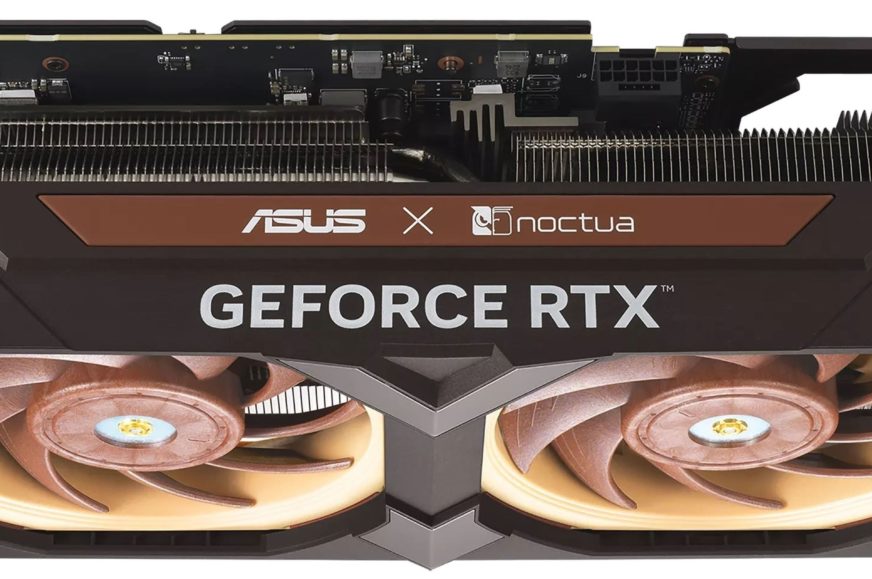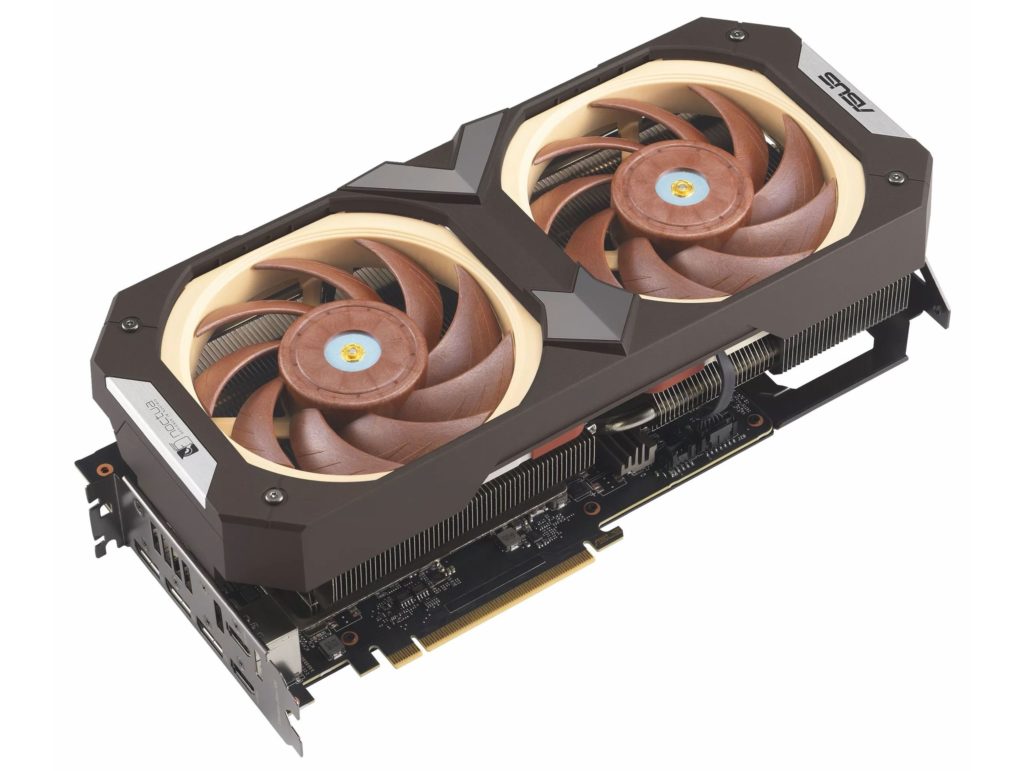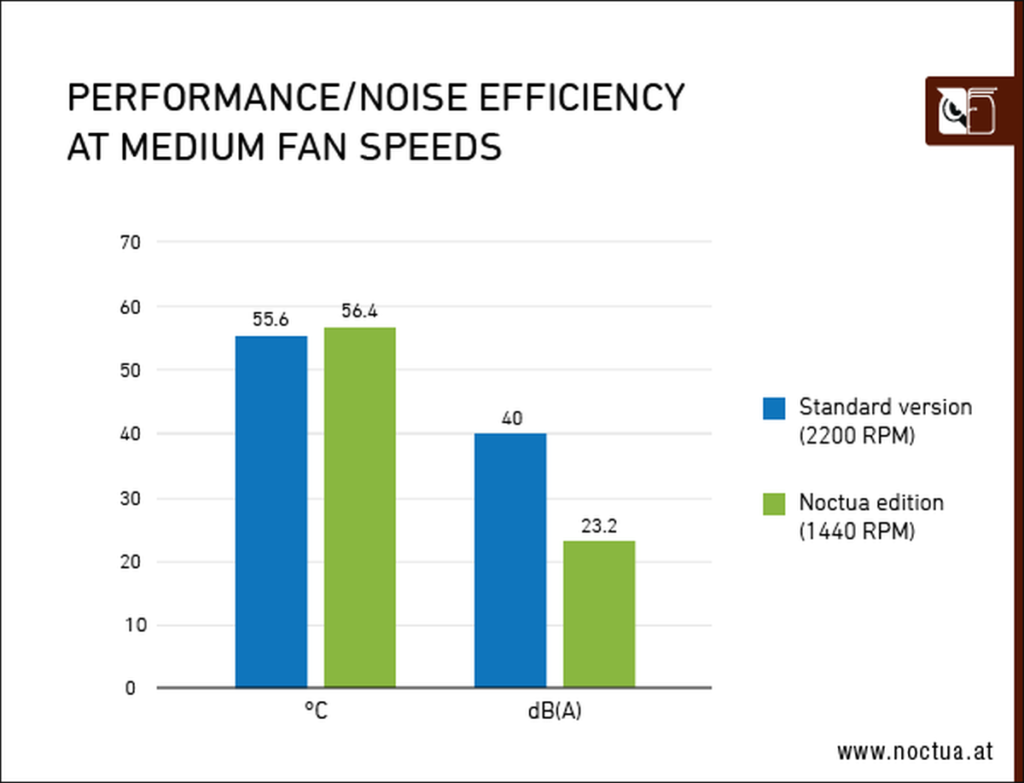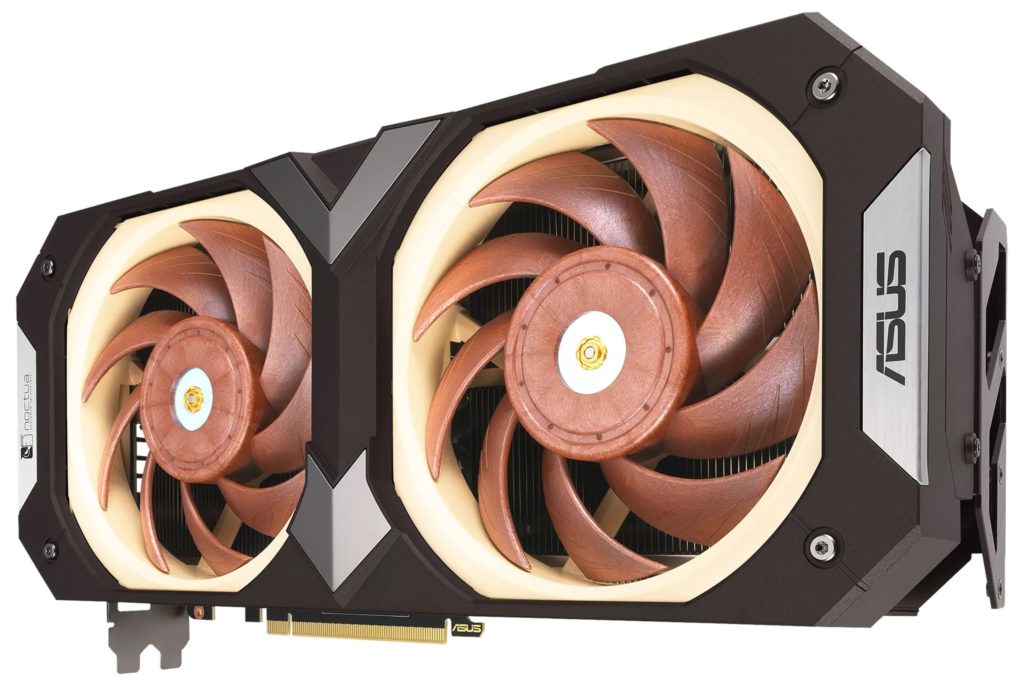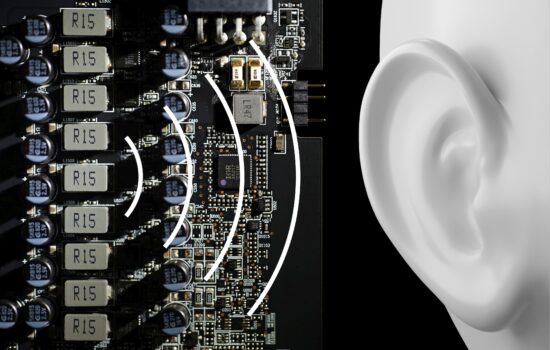Asus RTX 4080 O16G Noctua
You already know the non-reference graphics cards with Noctua coolers from the Nvidia Ampere generation (GeForce RTX 3000), but now comes the first design with an Ada Lovelace GPU, on the RTX 4080. The main improvement of the cooler lies in the use of the Vapor Chamber and the cooling efficiency seems to be really top-notch. But we know less about the coils – nobody was really concerned with them in tests, but we did get some information from Noctua.
We reported at the beginning of the year that Asus has deepened its cooperation with Noctua and they are preparing joint graphics cards with the latest GPUs. The announced model labeled RTX 4080 O16G Noctua is now a finished graphics card that has already gone on sale.
In the rough outlines, the Noctua cooler hasn’t changed much compared to the older models (on the RTX 3070 and RTX 3080), but it now uses a vapor chamber in the core instead of the traditional copper block. This means that not only the heatpipe, but also the base is built on a condensate base, which promises a more efficient heat transfer from the chip to the cooler’s heatsink.
Compared to the TUF RTX 4080, the Noctua-cooled design is supposed to be more efficient (i.e. achieve higher cooling performance at lower noise levels) despite the shorter radiator. In terms of overall dimensions, the Noctua RTX 4080 O16G is 38.2mm shorter in length (at 310mm) than the TUF RTX 4080, although it is 14.9mm taller (at 87.5mm). However, this won’t make for worse compatibility with expansion cards, while the graphics card with the Noctua cooler will have wider compatibility with cases. And not just in comparison to the TUF RTX 4080, which Noctua’s RTX 4080 O16G is directly confronted with within internal materials, but also with other RTX 4080 graphics cards. These are all quite long and they outsize the Noctua cooler model.
That said, the Noctua cooler’s heatsink is rather lower, and the overall greater thickness here is due to the NF-A12x25 fans with a 25mm profile, which is above standard for graphics card coolers. Thanks to the use of these fans, we believe this is currently the most aerodynamically quiet RTX 4080 design.
However, it should be remembered that the coils are also a source of sound. We didn’t learn much about their noise level from the available reviews, most tests didn’t even mention them. But ComputerBase notes at least that they are acoustically at a “normal” level. This means that they will be significantly noisier than the sound from airflow, which is the case of the Tri Frozr 3S cooler on the MSI RTX 4080 Suprim X. In our spectrograms you can see the largest peak at 1076 Hz, the source of which are the coils.
Silencing the coils completely is, of course, impossible and to achieve the best result Noctua did everything in its power, according to its representative. Another significant limitation is that Noctua can’t influence too much how Asus will manufacture the PCB. At the same time, Noctua is aware that coils are the “bottleneck” of graphics cards with extremely quiet coolers, such as the one used on this graphics card according to internal tests.
At the same GPU temperature, Noctua’s RTX 4080 O16G is supposed to be significantly quieter than the TUF RTX 4080 – the materials claim a difference of up to 4.8 dBA. The degree of improvement is, of course, also dependent on the intensity of system cooling airflow. All things being equal, however, the Noctua cooler’s improvement is unambiguous. At medium speed, Noctua reports a difference in noise even as high as 16.8 dBA, with even slightly higher cooling performance being achieved.
The official GPU clock speeds of the Noctua graphics card are along the lines of the TUF RTX 4080 OC, i.e. up to 2625 MHz. The manufacturer’s suggested retail price for the RTX 4080 O16G Noctua is 1650 EUR.
English translation and edit by Jozef Dudáš
- Contents
- Asus RTX 4080 O16G Noctua





